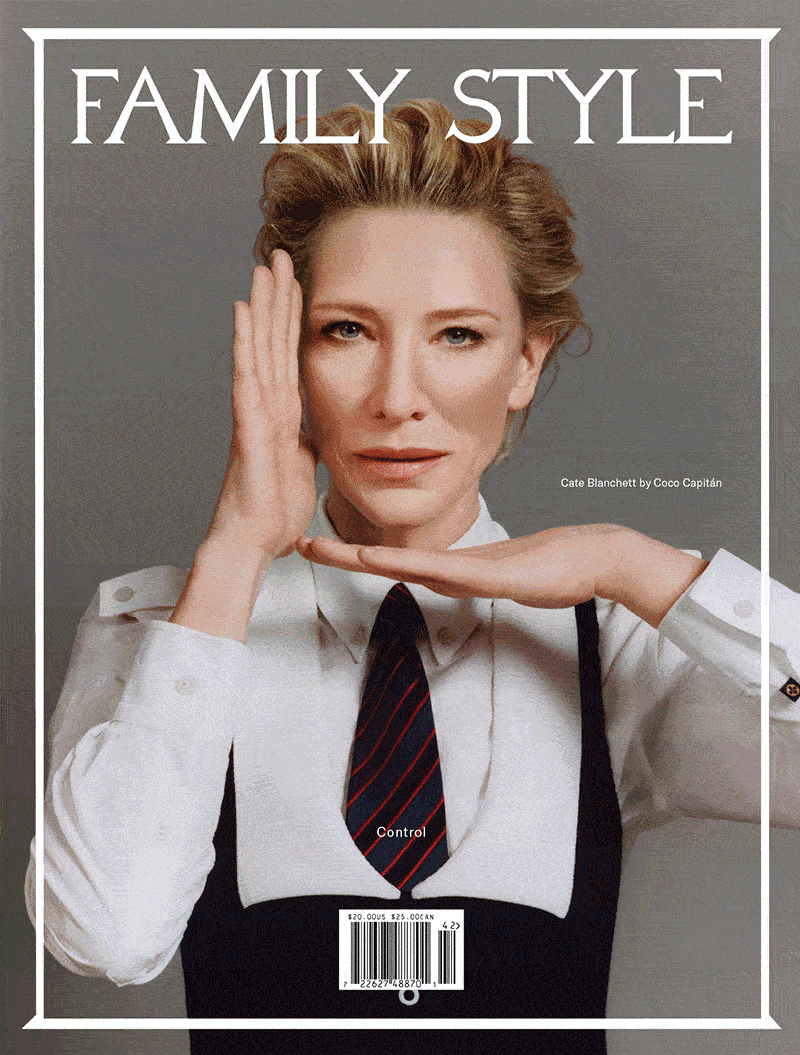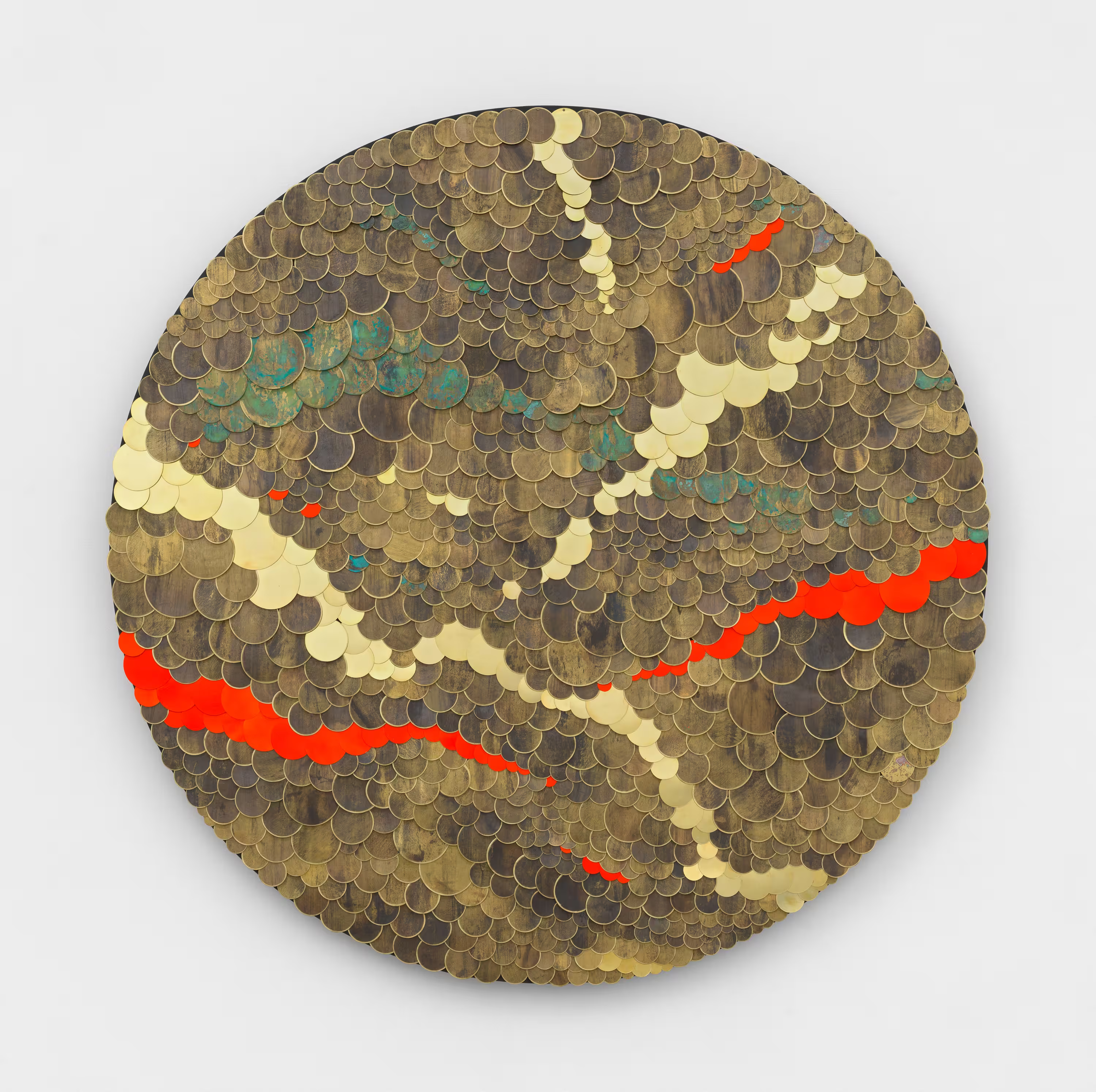
Tuan Andrew Nguyen, Slice, 2025. Photography by Dan Bradica. Image courtesy of the artist and James Cohan, New York.
Frieze has evolved quite a bit since making its debut in New York City 13 years ago. Long gone are the days of breezy ferry rides across the East River to the airy tent on Randall’s Island—a trek that felt spiritually rejuvenating. Now it’s a commute to the Shed in Hudson Yards, a corporate enclave clamoring after the zeitgeist. Inside, however, there are gallerists, curators, and creatives with heart, and often a sense of humor. This year saw a tidy roster of 65 galleries from 25 different countries, weaving together perspectives beyond the New York scene. Especially noteworthy was the compelling, balanced vision of curator Lumi Tan, formerly of the Kitchen, for the fair’s Focus section, which platforms newer galleries and emerging artists. An array of more conservative paintings point to ongoing apprehension about the market. There are vague abstractions, straightforward landscapes, among other tried-and-true tropes, but the stand-out presentations manage to negotiate commercial concerns within risk-taking. Here are some of the best.
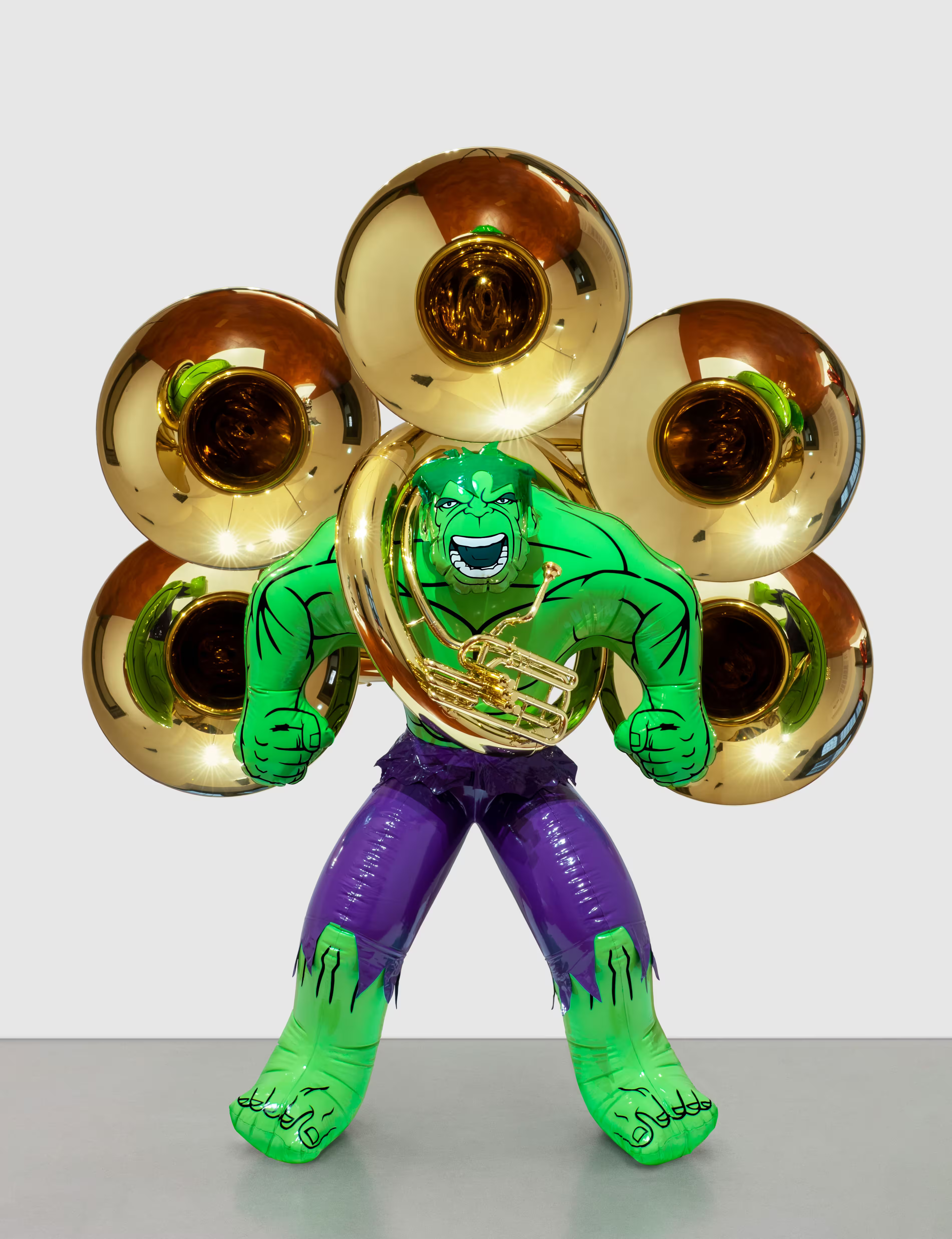
Jeff Koons, Hulk (Tubas), 2004-2018. Image courtesy of the artist and Gagosian.
The trio of what I’d guess would be life-size Hulk sculptures by Jeff Koons—designed to look like blow-up toys while brandishing monster-sized musical instruments and a pool floatie—is awesome in the way Marvel movies are awesome. My inner tween boy is delighted. As a mature adult art connoisseur, I notice how the sheer visual impact of the characters is enough that throngs of visitors instinctively stand several feet back in the booth, apparently compelled to give the looming green figures their space, even as the aisle turns into a bottleneck. I find myself double-checking with a guard if it is okay to actually walk into the booth and view the works from behind and up close (it is, and the sculptures are just as cool from all the angles).
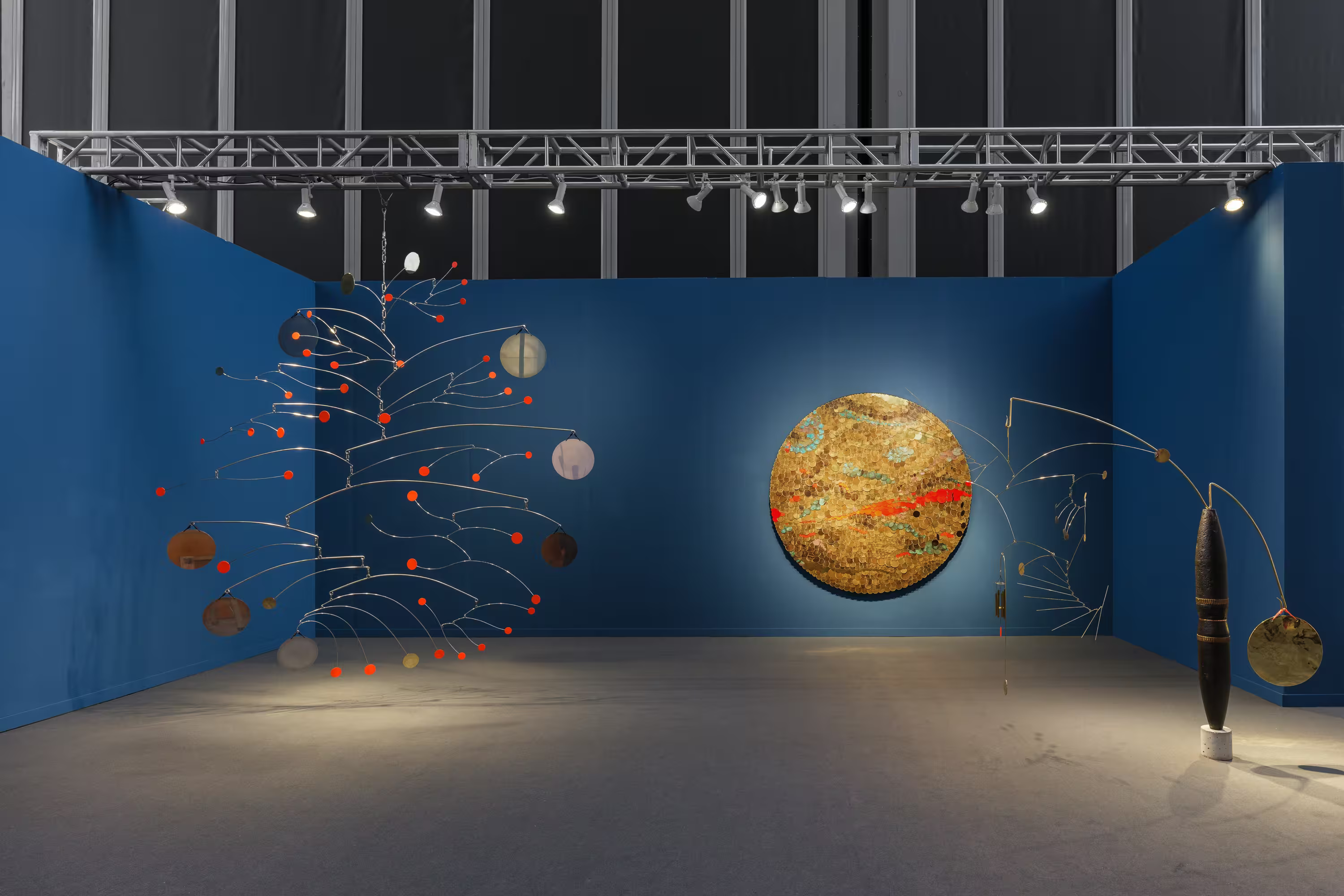
Installation view of "Tuan Andrew Nguyen: Outburst, Tremor, Scars," 2025. Image courtesy of the artist and James Cohan, New York.
At James Cohan Gallery’s booth, Vietnamese-American artist Tuan Andrew Nguyen has staged a far more contemplative moment. A group of metal sculptures on display includes two mobiles, inspired by those of Alexander Calder, and two flat, round wall-works, their surfaces recalling the scales of a dragon. All were fabricated from materials that once comprised artillery shells and unexploded ordnance left over from the Vietnam war, bringing to light one of the many ugly long-term repercussions of the conflict. Namely, it’s estimated that roughly 800,000 tons of explosives remain scattered and an ever-present hazard throughout the country’s landscape. The sculptures are also the embodiments of the same historical themes centered in two videos by the artist, The Sounds of Cannons, Familiar Like Sad Refrains (2021) and The Unburied Sounds of a Troubled Horizon (2022).
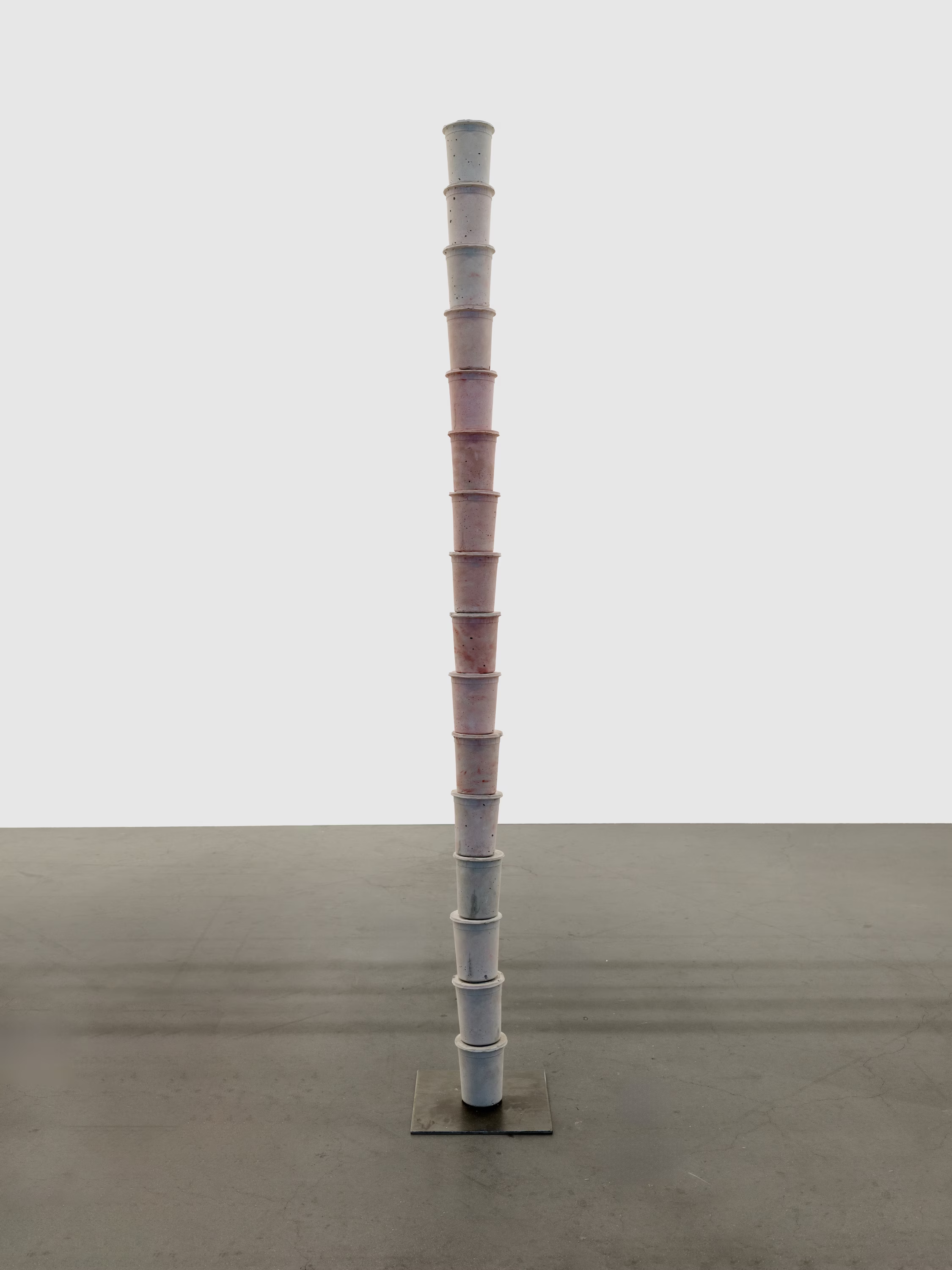
Tahir Karmali, It was worth the tip, 2025. Image courtesy of the artist and Management.
Recovering from substance abuse, Nairobi-born, Brooklyn-based Tahir Karmali channeled his excess energy into boxing. At the booth of New York’s Management gallery in Focus, a group of wall-works take inspiration from the catharsis Karmali has gained in practicing the sport. Faint, skeletal silhouettes echoing human torsos appear, ghost-like, under veils of nylon stretched over the canvases. Mixed into the pale pink pigment is the artist’s own blood and spit. A sculpture, It was worth the tip, 2025, is a thin tower of red-tinted, concrete casts of take-out containers, which harken back to the artist’s time as a sous chef and prompts reflection on the immigrant labor behind kitchens, restaurants, and delivery services.
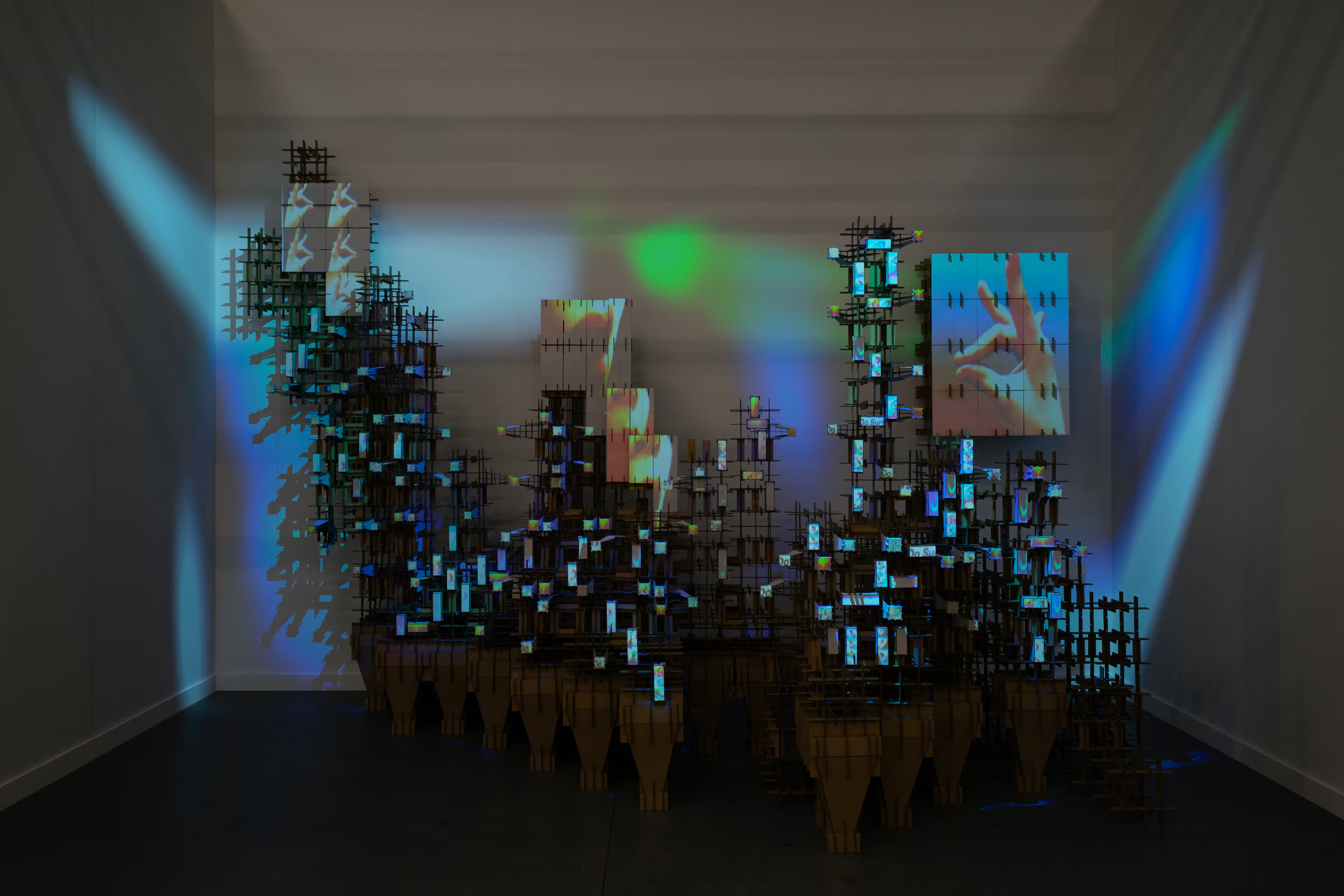
Yehwan Song, Internet Barnacles, 2025. Image courtesy of the artist and G Gallery.
The multimedia practice of Yehwan Song stands as one of the only well-executed, non-cliché-ridden attempts at criticizing our relationship with technology that I’ve seen lately. (The popular sentiment seems to be complacency around our generally toxic dependency as a bygone conclusion). A new body of work from the Korean-born artist consists of sprawling cardboard sculptures as the backdrop for intricate matrices of video projections: Dozens of different mini-videos, all consolidated into streams from just one or two projectors, each play across countless rectangular facets of the structures. At Seoul-based G Gallery’s booth in Focus, Internet Barnacles, 2025, twinkles with movement from so many discrete animations that it feels overwhelming to choose one to focus on. The installation speaks to the unsettling notion that Internet users have gone from what Song refers to as autonomous “surfers” to inherently passive “barnacles,” feeding off of algorithmically generated content that placates them into relinquishing their power.
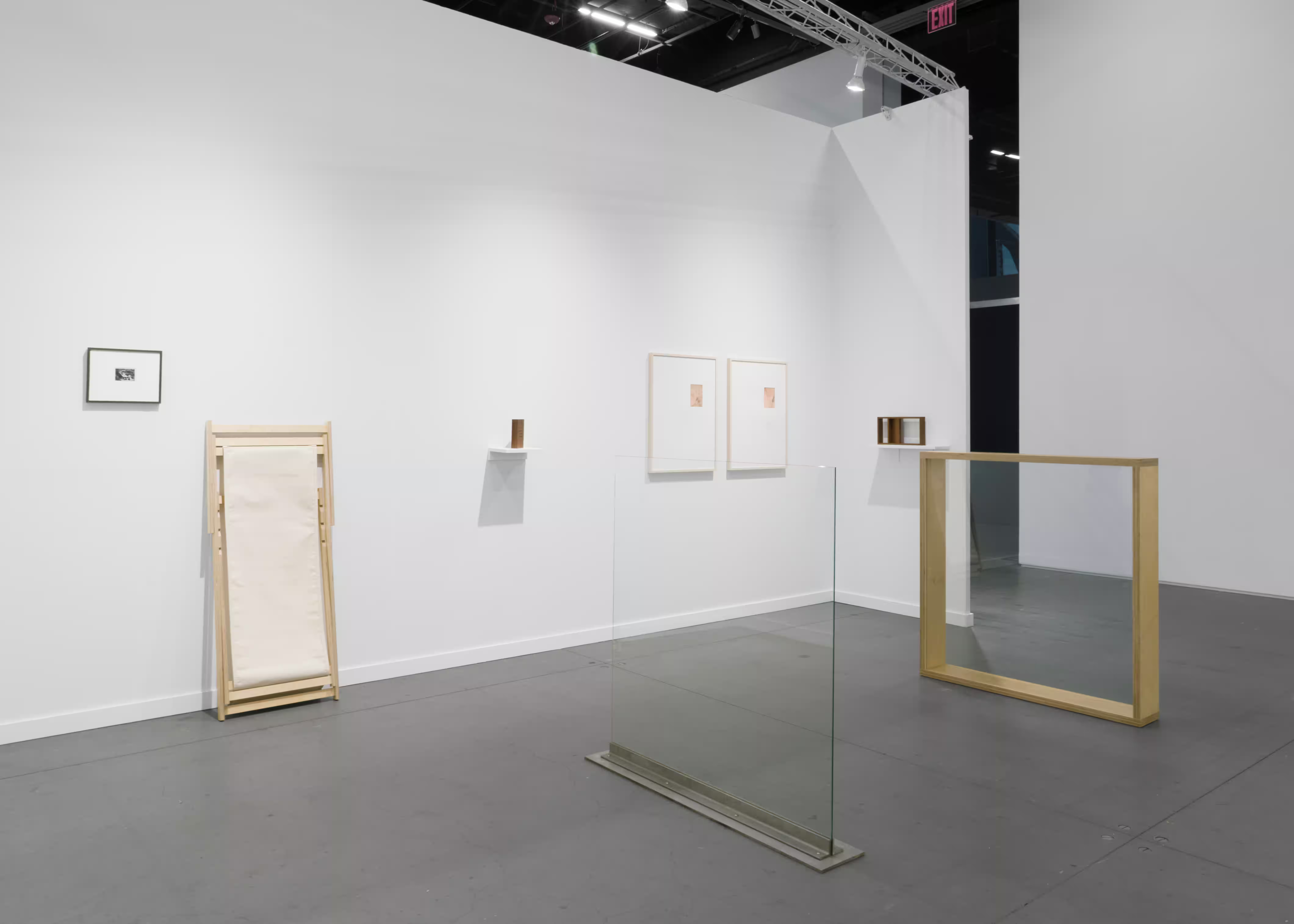
Installation view of "Jenni Crain," 2015-2021. Photography by Greg Carideo. Image courtesy of the artist and Gordon Robichaux.
Gordon Robichaux’s booth in Focus doubles as a tribute to the artist and curator Jenni Crain, who had shown at the New York-based gallery and was an active member of its community before she passed away from Covid in 2021 at the age of 30. On view at the fair, the most extensive single showing of her oeuvre to date displays serene, minimalist sculptures made primarily out of wood and glass as well as a small selection of photographic prints and an abstract painting. All of the above highlight the elegance of simple shapes and careful contemplation of form and light as core to her approach. The gallery is also presenting a simultaneous solo show featuring the late artist at its space off Manhattan’s Union Square alongside a separate group show of artists she supported, including Talia Chetrit, Alex Ito, and Maren Hassinger.
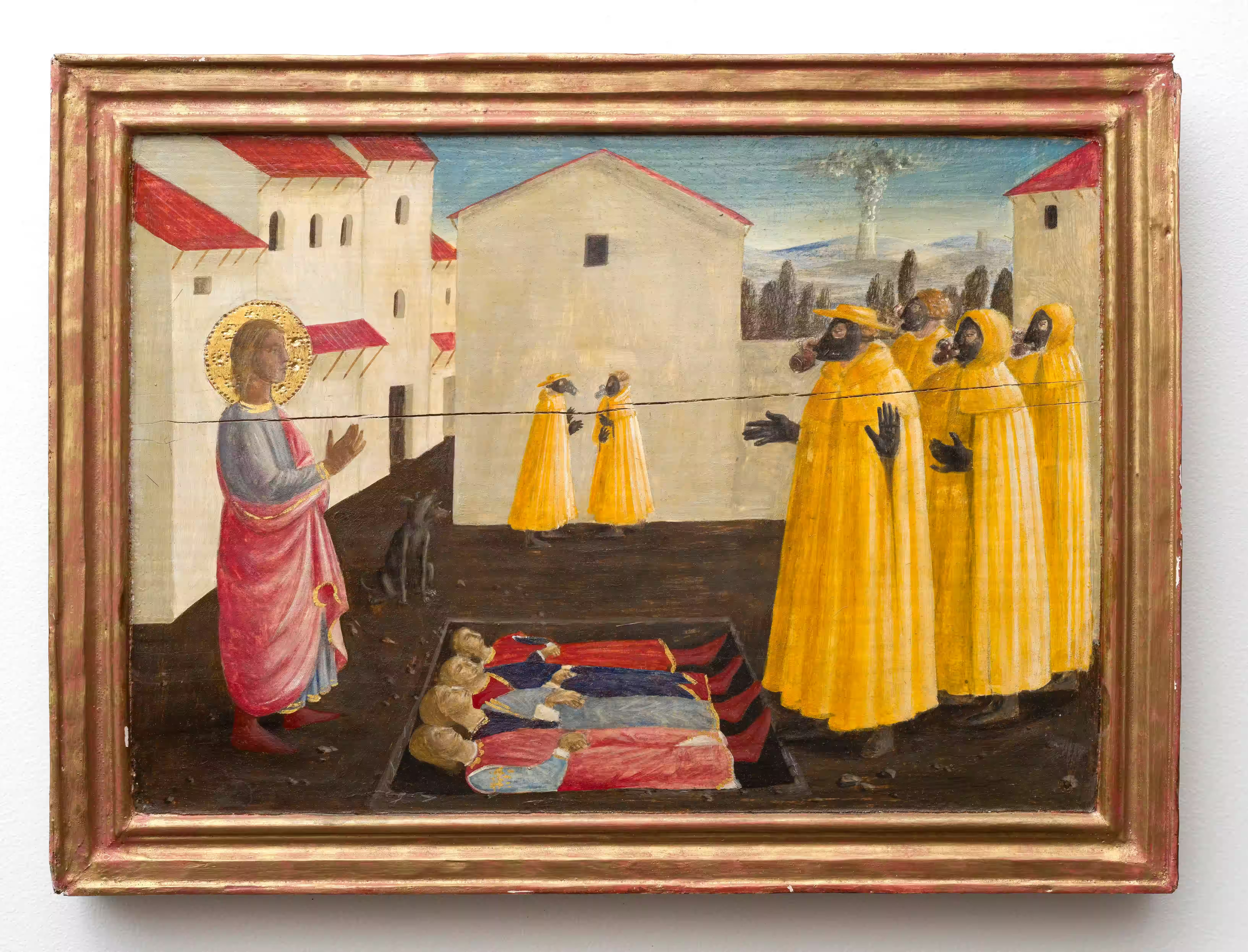
Malo Chupay, Scene of Healing, 2025. Image courtesy of the artist and Mor Charpentier.
French artist Malo Chupay’s work, presented by Paris- and Bogota-based Mor Charpentier, is a love letter to the aesthetic of late Middle Ages and early Renaissance paintings in Europe. In contrast to his contemporary practice, the 30-year-old replicates the art historical essence of these eras—imperfect attempts at perspective, blood-red pigment and gold leaf detailing, tempera-on-wood, rampant "Madonna and Child" motifs, and so forth. Yet apocalyptic details folded into this imagery give away a present-day point of view. At first glance, what appears to be a group of plague doctors in Scene of Healing, 2025, are actually men wearing something like World War II gas masks. In Virgin with Child and Saints, 2025, a trio of women don veils and yellow gowns that look more like hazmat suits on closer inspection. A portrait of a nobleman holding what one might interpret as a knight’s helmet prompts reconsideration with its title, The Astronaut, 2025. Catching the out-of-place details makes me feel like an art historian spotting a fake—a sort of playful I Spy aspect, that, combined with the darker undertones, lends to an engrossing narrative effect.
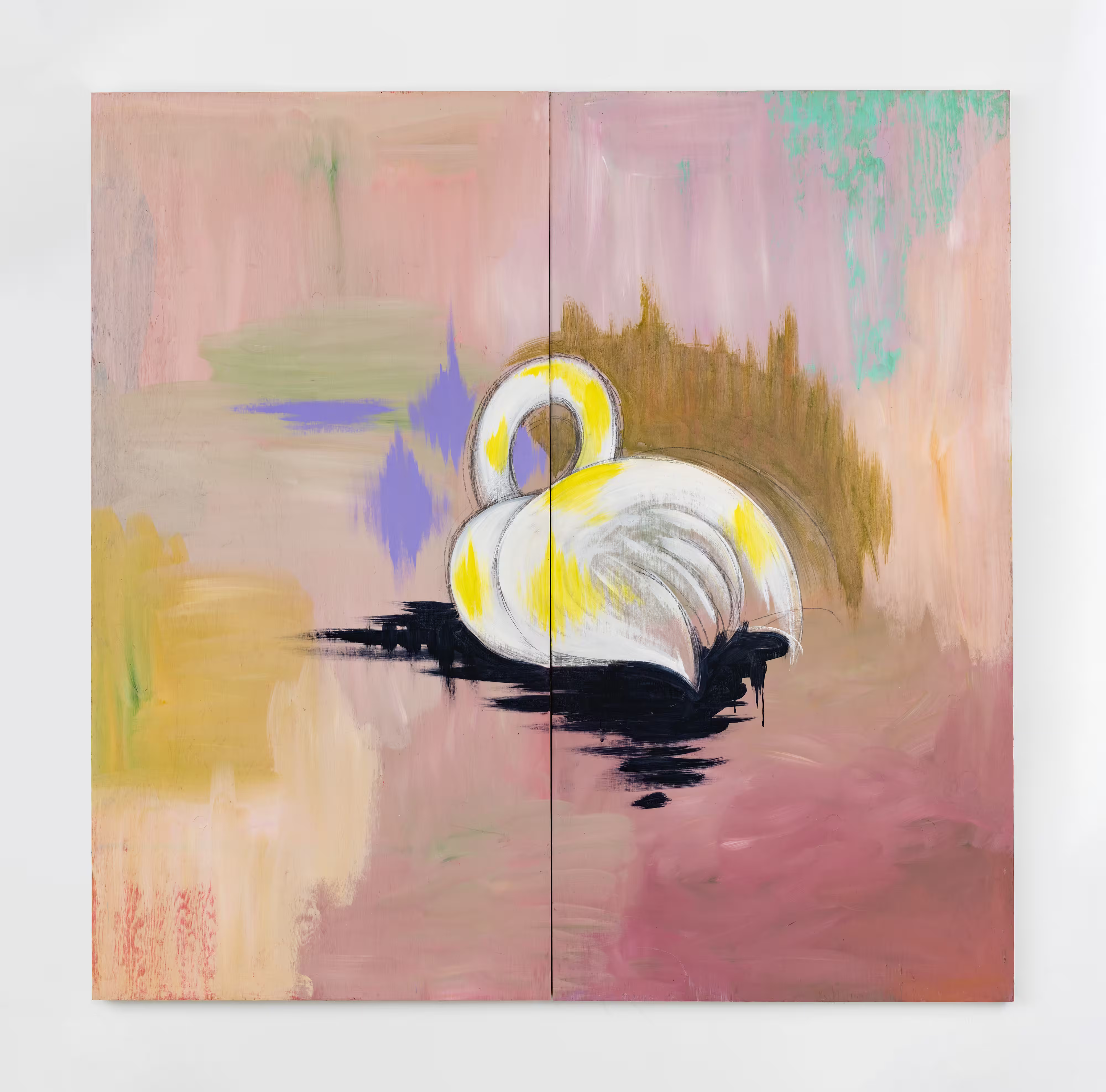
Wanda Koop, No Words (Swan #2), 1990. Image courtesy of the artist and Night Gallery.
An evocative selection of large-scale paintings by Wanda Koop offers a glimpse of the 73-year-old Canadian artist’s work between the years of 1981 and 1990. The period marked her swapping canvas for plywood, making the switch for economical reasons and keeping with it for aesthetic ones. Six compositions on view at Los Angeles-based Night Gallery’s booth are mostly a mixture of industrial scenes, including a power plant and a structure topped by a satellite dish, and natural landscapes; an outlier comes in No Words (Swan #2), 1990, which centers on an image of a swan floating on a pink-hued body of water. Each vignette slips between broader sweeps of color, hard lines, and only a few involved details. The overall effect articulates subject matter not through annunciated speech but rather seductive whispers.
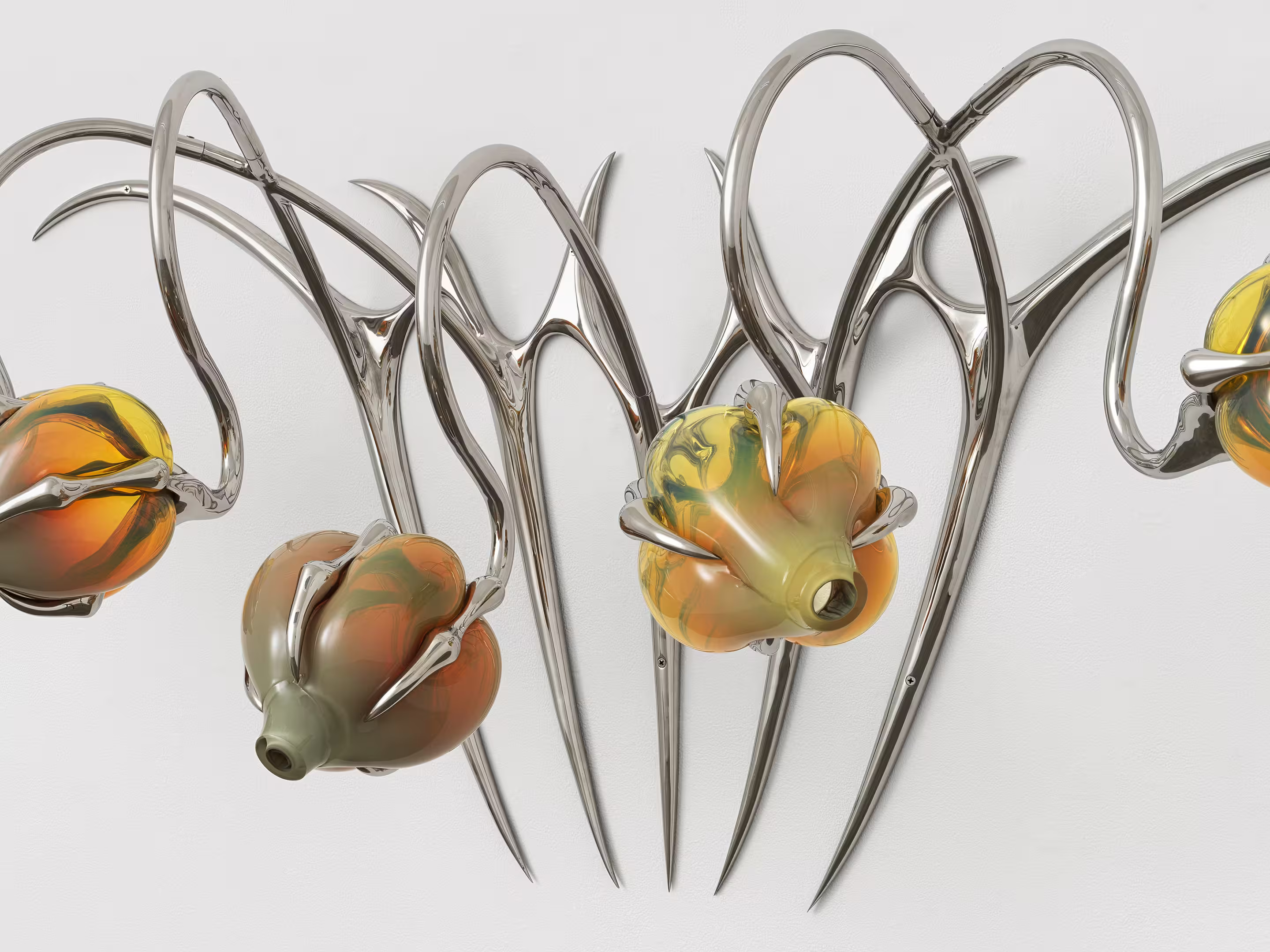
Hannah Levy, Untitled, 2025. Photography by Dan Bradica Studio. Image courtesy the artist and Casey Kaplan, New York.
New York native Hannah Levy is known from her large-scale sculptures that typically use some combination of metal, glass, and silicone. References from the natural world as well as mid-century modern furniture result in forms that teeter between organic and alien. Three wall-based works on view at Casey Kaplan’s Frieze presentation draw from ethereal Art Nouveau aesthetics crossed with a post-war space-age sensibility, as vine-like, stainless steel outgrowths culminate in colorful glass bulbs. Two freestanding pieces, with segmented glass cores balanced on arthropodal legs, recall insectile beings. Levy’s streamlined craftsmanship reads with a polish and elegance that counters the visceral strangeness of these figures.
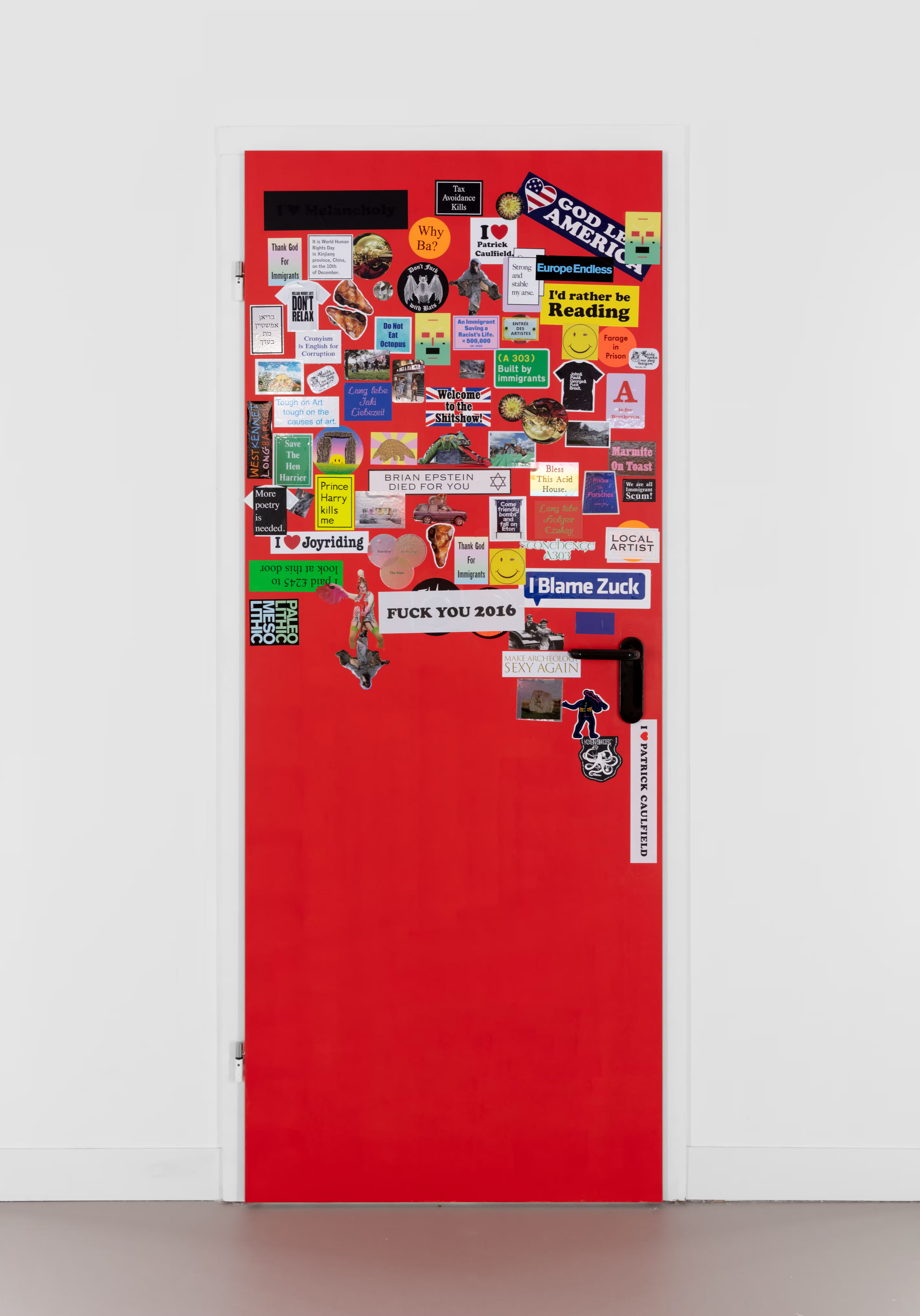
Jeremy Deller, Stickered Door Retrospective, 2021. Photography by Sebastiano Pellion di Persano. Image courtesy of the artist and The Modern Institute.
A group presentation representing the Modern Institute at Glasgow’s program features a colorful selection of works that come together harmoniously and command intrigue individually. The entrance for the booth’s private room is Jeremy Deller’s Stickered Door Retrospective, 2021—a red door covered in souvenir stickers that allude to Deller’s past works. Elsewhere, a hanging sculpture by Andrew J. Greene, Study for Pie Jail II, 2025, presents a realistic silicone fruit pie locked in an aluminum cage. And an Andrew Sim painting, portrait of two rats without hair with stars, 2025, is an oddly adorable illustration of a pair of smiling rats underneath the night sky.
Frieze 2025 is on view until May 11, 2025, at The Shed, 545 W 30th St, New York, New York 10001.















